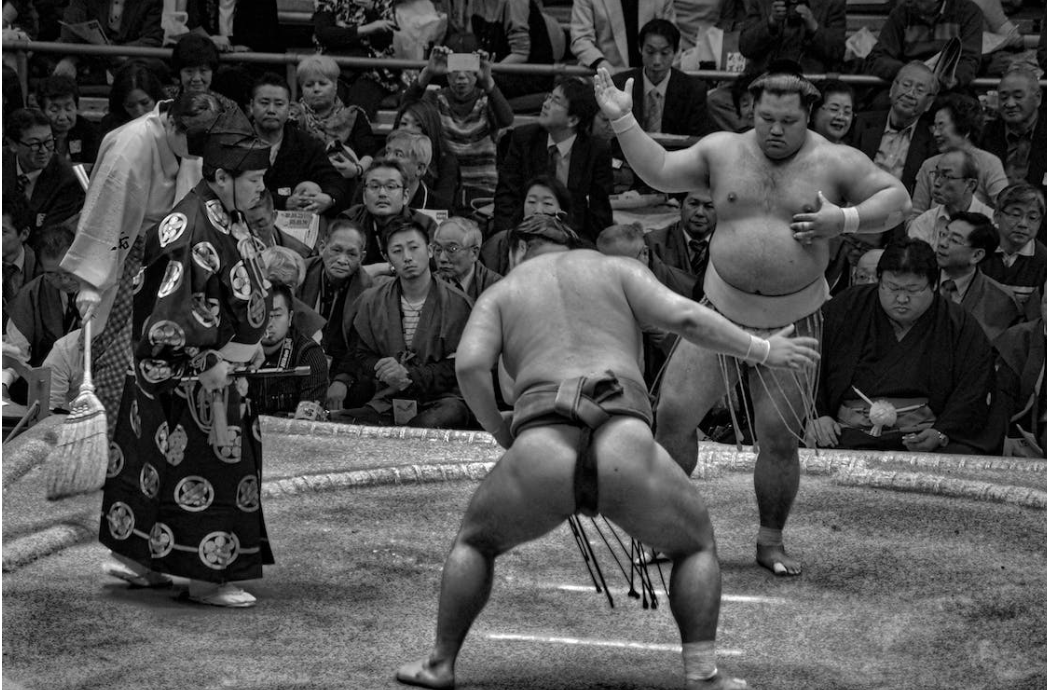
Sumo is a Japanese sport of full-contact wrestling. It is considered to be one of the oldest sports in the world, with a history dating back to at least the 2nd century AD. Sumo is also the national sport of Japan, and is deeply rooted in Japanese culture and religion.
The exact origins of sumo are unknown, but it is believed to have originated as a form of ritualistic combat. Early sumo matches were often held as part of religious ceremonies, and were seen as a way to appease the gods and spirits. As sumo evolved, it began to take on a more competitive nature, and eventually developed into the sport that we know today.
Sumo is a very physical sport, and requires a great deal of strength, stamina, and technique. Wrestlers must be able to overpower their opponents, both physically and mentally. Sumo matches are held on a raised platform called a dohyo, which is covered in clay and sand. The wrestlers wear a traditional garment called a mawashi, which is a loincloth made of cotton.
The rules of sumo are relatively simple. The first wrestler to make their opponent touch the ground with any part of their body other than their feet loses the match. Wrestlers can use a variety of techniques to try to achieve this, including throws, pushes, and trips. Matches are typically very short, and can be over in just a few seconds.
Sumo is a very popular sport in Japan, and is watched by millions of people each year. There are six professional sumo divisions, and the top wrestlers are considered to be national heroes. Sumo is also a popular tourist attraction, and many people visit Japan specifically to see a sumo tournament.
In addition to its popularity in Japan, sumo is also gaining popularity in other parts of the world. There are now sumo tournaments held in many countries, and the sport is even being taught in some schools. Sumo is a unique and exciting sport, and it is sure to continue to grow in popularity in the years to come.
Here is a more detailed look at the history of sumo:
Early History
The earliest known mention of sumo is in the Kojiki, a Japanese historical text that was compiled in the 8th century AD. The Kojiki tells the story of a sumo match between the gods Takemikazuchi and Takeminakata, which was held to decide who would rule the Japanese islands. Takemikazuchi won the match, and he and his descendants became the rulers of Japan.
Sumo continued to be practiced in Japan during the Nara and Heian periods (710-794 and 794-1185 AD, respectively). During this time, sumo was primarily a sport for the nobility, and it was often held at the imperial court.
Edo Period
Sumo began to gain popularity among the general public during the Edo period (1603-1867 AD). This was due in part to the efforts of the Tokugawa shogunate, which promoted sumo as a way to promote national unity. The shogunate also built several sumo stadiums throughout Japan, which helped to increase the sport’s popularity.
During the Edo period, sumo also began to develop its own unique culture and traditions. These traditions include the use of salt to purify the dohyo, the wearing of the mawashi, and the chanting of the referee.
Modern Era
Sumo continued to be popular in Japan after the Meiji Restoration of 1868. In 1925, the Japan Sumo Association was founded, which helped to standardize the rules of the sport and to promote its growth.
Today, sumo is one of the most popular sports in Japan. There are six professional sumo divisions, and the top wrestlers are considered to be national heroes. Sumo is also a popular tourist attraction, and many people visit Japan specifically to see a sumo tournament.
Sumo is a unique and exciting sport with a long and rich history. It is a popular sport in Japan, and it is also gaining popularity in other parts of the world. Sumo is a great way to learn about Japanese culture, and it is a fun and challenging sport to watch and participate in.